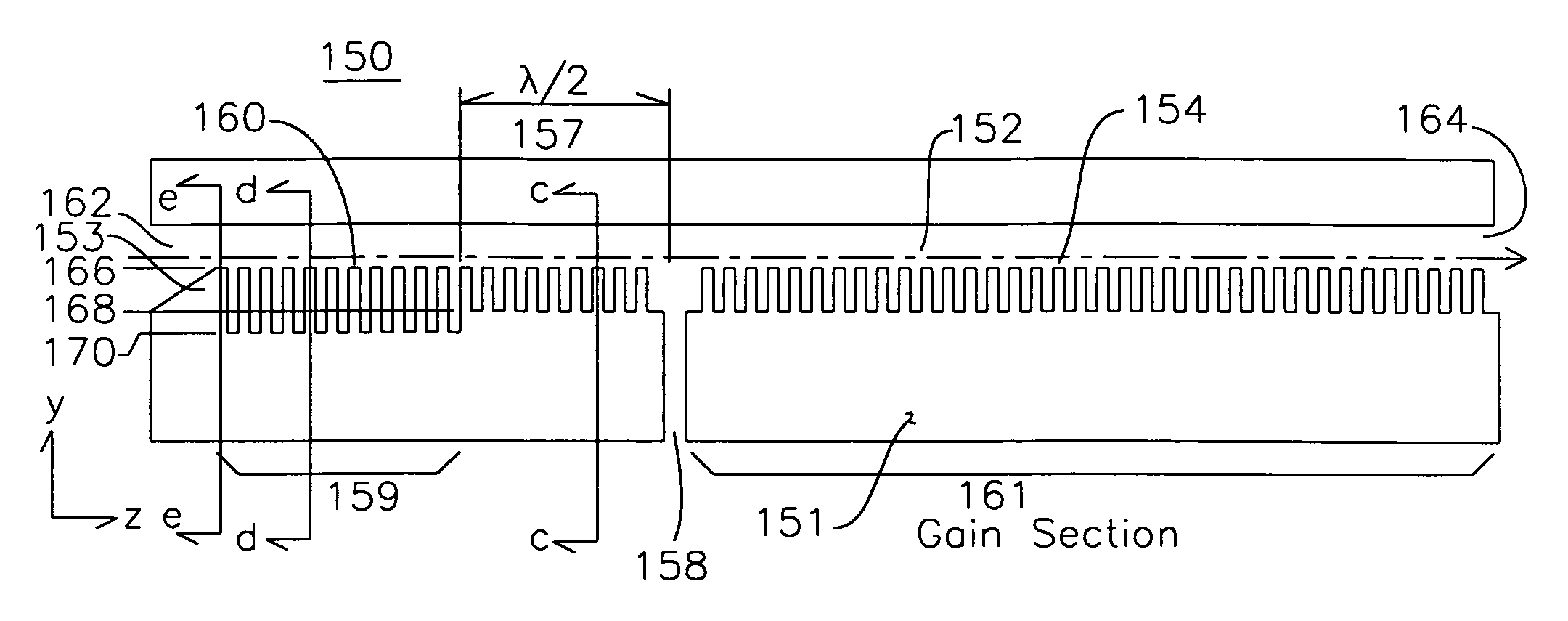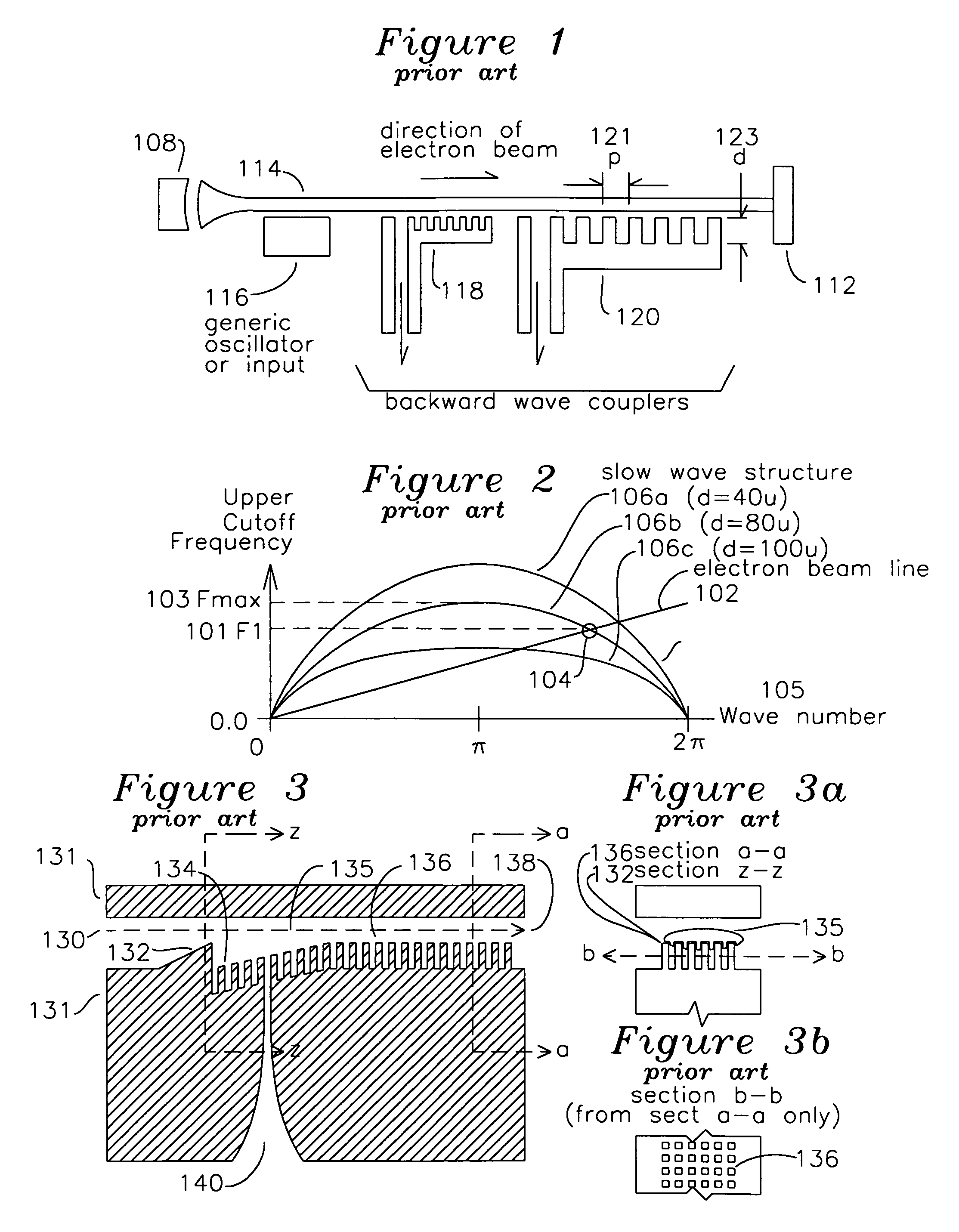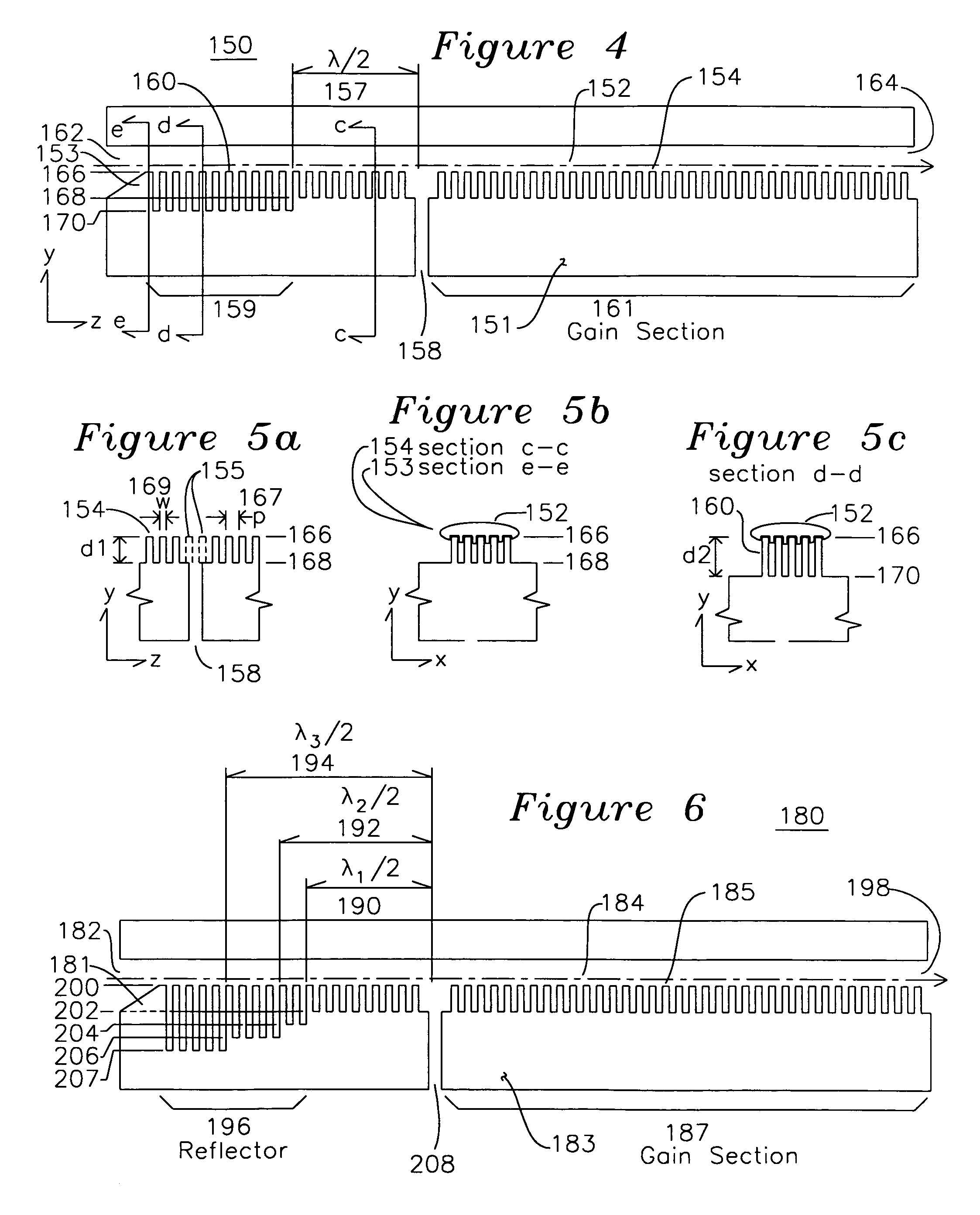Backward wave coupler for sub-millimeter waves in a traveling wave tube
a traveling wave tube and backward wave technology, which is applied in the direction of parametric amplifiers, klystrons, klystrons, etc., can solve the problems of inefficient coupling between the slow wave structure and the output waveguide, inability to manufacture the device shown in fig. 3 for use in sub-millimeter wavelengths, and inefficient coupling of rf energy
- Summary
- Abstract
- Description
- Claims
- Application Information
AI Technical Summary
Benefits of technology
Problems solved by technology
Method used
Image
Examples
Embodiment Construction
[0036]FIG. 4 shows the side view of a backward wave coupler 150 for a traveling wave tube, which is defined in a coordinate system y and z axis as shown, and an x axis (shown in FIGS. 5b and 5c) perpendicular to the y and z axis. An electron beam 152 is emitted from a cathode (not shown) and enters beam tunnel entrance 162, where it travels over beam shaper 153. This beam shaper 153 may have a plurality of slots parallel to the axis of electron beam 152 and over and around a plurality of pintles 154, which comprise corrugations having a pitch p, a width w, a depth d1 as shown in FIG. 5a, and may also include slots substantially aligned with the slots of beam shaper 153, and parallel to the axis of electron beam 152. The electron beam 152 may include counter-propagating RF at a wavelength λ, and the pintles 154 are spaced at less than 0.1λ in the z and optionally x directions. The pintle surface plane 166 is planar with a surface of the beam shaper 153 and a z-x plane below the elect...
PUM
 Login to View More
Login to View More Abstract
Description
Claims
Application Information
 Login to View More
Login to View More - R&D
- Intellectual Property
- Life Sciences
- Materials
- Tech Scout
- Unparalleled Data Quality
- Higher Quality Content
- 60% Fewer Hallucinations
Browse by: Latest US Patents, China's latest patents, Technical Efficacy Thesaurus, Application Domain, Technology Topic, Popular Technical Reports.
© 2025 PatSnap. All rights reserved.Legal|Privacy policy|Modern Slavery Act Transparency Statement|Sitemap|About US| Contact US: help@patsnap.com



